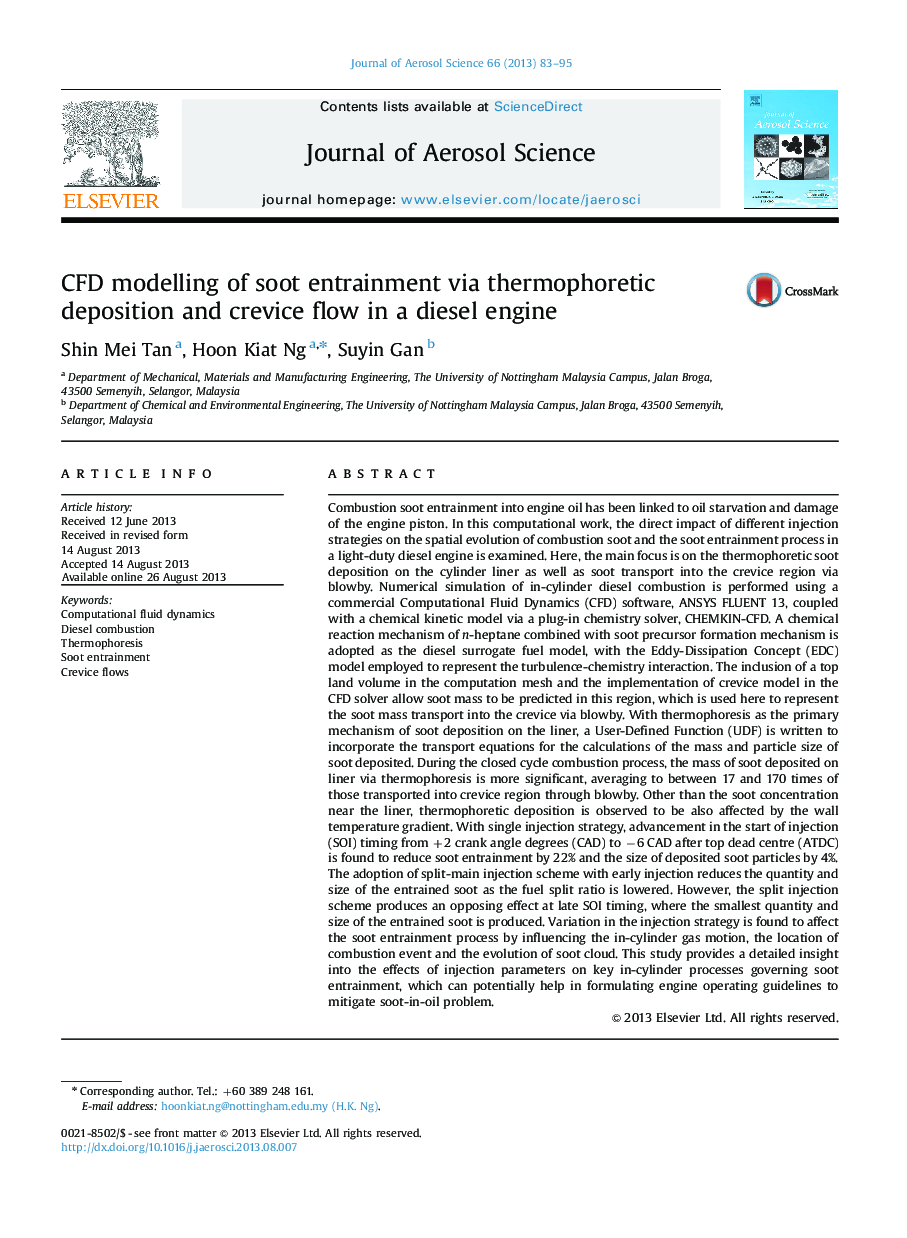| کد مقاله | کد نشریه | سال انتشار | مقاله انگلیسی | نسخه تمام متن |
|---|---|---|---|---|
| 4452460 | 1620757 | 2013 | 13 صفحه PDF | دانلود رایگان |

• Effects of injection parameters on soot entrainment process are determined.
• Amount of soot deposited on liner is higher than that entering the crevice region.
• Employment of split-main injection exhibits opposite effect at early and late SOI.
• Evolution of soot cloud and development of combustion affects soot entrainment.
Combustion soot entrainment into engine oil has been linked to oil starvation and damage of the engine piston. In this computational work, the direct impact of different injection strategies on the spatial evolution of combustion soot and the soot entrainment process in a light-duty diesel engine is examined. Here, the main focus is on the thermophoretic soot deposition on the cylinder liner as well as soot transport into the crevice region via blowby. Numerical simulation of in-cylinder diesel combustion is performed using a commercial Computational Fluid Dynamics (CFD) software, ANSYS FLUENT 13, coupled with a chemical kinetic model via a plug-in chemistry solver, CHEMKIN-CFD. A chemical reaction mechanism of n-heptane combined with soot precursor formation mechanism is adopted as the diesel surrogate fuel model, with the Eddy-Dissipation Concept (EDC) model employed to represent the turbulence-chemistry interaction. The inclusion of a top land volume in the computation mesh and the implementation of crevice model in the CFD solver allow soot mass to be predicted in this region, which is used here to represent the soot mass transport into the crevice via blowby. With thermophoresis as the primary mechanism of soot deposition on the liner, a User-Defined Function (UDF) is written to incorporate the transport equations for the calculations of the mass and particle size of soot deposited. During the closed cycle combustion process, the mass of soot deposited on liner via thermophoresis is more significant, averaging to between 17 and 170 times of those transported into crevice region through blowby. Other than the soot concentration near the liner, thermophoretic deposition is observed to be also affected by the wall temperature gradient. With single injection strategy, advancement in the start of injection (SOI) timing from +2 crank angle degrees (CAD) to −6 CAD after top dead centre (ATDC) is found to reduce soot entrainment by 22% and the size of deposited soot particles by 4%. The adoption of split-main injection scheme with early injection reduces the quantity and size of the entrained soot as the fuel split ratio is lowered. However, the split injection scheme produces an opposing effect at late SOI timing, where the smallest quantity and size of the entrained soot is produced. Variation in the injection strategy is found to affect the soot entrainment process by influencing the in-cylinder gas motion, the location of combustion event and the evolution of soot cloud. This study provides a detailed insight into the effects of injection parameters on key in-cylinder processes governing soot entrainment, which can potentially help in formulating engine operating guidelines to mitigate soot-in-oil problem.
Journal: Journal of Aerosol Science - Volume 66, December 2013, Pages 83–95